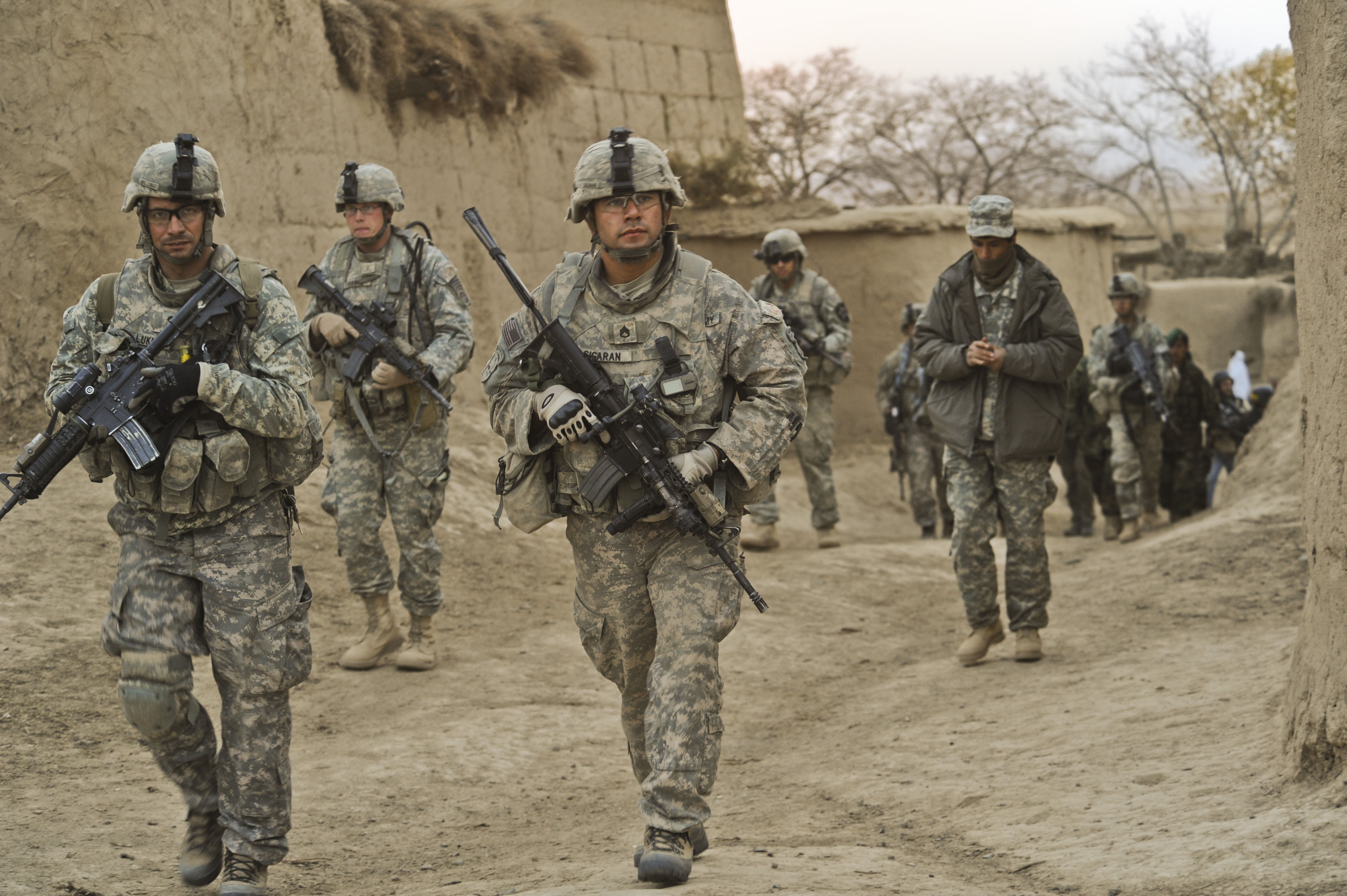French military theorist Roger Trinquier famously posited that the sine qua non of victory against an insurgency is the unconditional support of the local populace. One of the most critical ways of securing this support is by protecting the population, which the Afghan government and its U.S. backers have continually failed to do. As a result, the Taliban now control or contest around 40 percent of the country’s districts and, unfortunately, things are about to get much worse.
The primary reason the future does not look bright for many innocent Afghans is that the war strategy President Donald Trump unveiled last month is anything but “population-centric.” The plan rests on escalating airstrikes, loosening restrictions, and delegating authorities for use of force to the lowest levels.
The intensification of airstrikes is already well underway. Voice of America reported on Wednesday that the U.S. military in August alone dropped 555 bombs in Afghanistan against Taliban and Islamic State targets, “the highest number in a single month since 2012.”
The Pentagon has tried to reassure critics that Trump delegating authorities to lower levels will allow the military to better protect Afghan civilians – despite the escalation in strikes.
However, according to U.N. Assistance Mission in Afghanistan (UNAMA) figures, there was a 70 percent spike in civilian casualties from U.S. airstrikes in the first half of 2017 compared to the same period last year, contra the Defense Department hypothesis.
On Wednesday, Council on Foreign Relations Senior Fellow Micah Zenko noted the same phenomenon was occurring in Iraq and Syria coincident with the devolution of powers.
“And beyond the data from these wars, none of the many airpower studies that have ever been published has concluded that delegating strike authorities to lower levels reduces harm to civilians,” Mr. Zenko wrote in a piece published in Foreign Policy.
In short, it seems like a perfect confluence of factors likely to lead to even more indiscriminate killing, a notion subscribed to by peace activists and advocacy groups.
Human Rights Watch Senior Researcher Patricia Gossman told The Globe Post that her organization is concerned about Trump’s new strategy in Afghanistan and “particularly worried about the expanded use of air power.”
“We believe the intensification of the conflict has already caused great harm to civilians, and that is likely to get worse,” Ms. Gossman said.
Ms. Gossman also mentioned that in a letter to Pentagon chief James Mattis earlier this year HRW expressed these same concerns, noting that 2016 had the highest toll of Afghan civilian casualties yet recorded, thereby raising questions around protective measures.
“We believe the U.S. public should be better informed about the safeguards in place for this increased level of air operations to minimize harm to Afghan civilians in accordance with the laws of armed conflict and U.S. rules of engagement,” HRW’s letter to Mattis said.
HRW’s letter to Mattis was sent before Trump announced his Afghan strategy on August 21. The day after the announcement, Ms. Gossman wrote in an HRW dispatch that the president’s call to loosen restrictions on the use of force in Afghanistan amounted to an “unspoken suggestion” that the administration sees the laws of armed conflict as an excessive hindrance.
“Trump claimed to have ‘already lifted restrictions’ the Obama administration had imposed on military actions,” Ms. Gossman said in the article. “There are signs that his decision has already led to a rise in civilian deaths from U.S. airstrikes, which heightens concerns that new military procedures for vetting airstrikes are inadequate.”
One peace activist believes the U.S. has no inclination to improve safeguards or vetting procedures to protect civilians in Afghanistan despite the fact that failing to do so only fuels the insurgency.
“There is no will for the prevention of these tragedies on the part of the U.S. because a peaceful Afghanistan will not serve the ‘national interests’ of the U.S. as perceived by our military and government leaders,” Brian Terrell with the advocacy group Voices for Creative Nonviolence told The Globe Post.
Mr. Terrell pointed out that a number of military leaders have warned about the ramifications of civilian deaths in a conflict like Afghanistan. General Stanley McChrystal, he noted, once said that for every innocent person killed the U.S. creates 10 new enemies.
Even Trump’s former aide Lt. General Michael Flynn – before stepping down as Defense Intelligence chief – said that “dropping more bombs” would only exacerbate the conflict in Afghanistan, Mr. Terrell added.
“Any further military action by the U.S. and its allies will inevitably cause more of them [civilian casualties] and strengthen the insurgency,” he claimed. “The escalation will only boost ISIS and the Taliban in Afghanistan.”
Director of Research for the Foreign Policy program at Brookings Institution, Michael O’Hanlon, however, warned that using Syria as a baseline may not be appropriate given that in Afghanistan the U.S. should have more resources on the ground.
“That’s because of the expected expansion in advisory teams under the coming Trump buildup,” O’Hanlon, a former member of the CIA’s external advisory board, told The Globe Post. “As such, I am hopeful that civilian casualties will not grow substantially.”
The Defense Department did not respond when asked to comment about its plans to better protect civilians as it intensifies the air campaign in Afghanistan.
An increase in fatalities among non-combatants will certainly not help Kabul in winning Afghan hearts and minds. With an unpopular host government, a neighboring country that provides resources and sanctuary for militants, and likely increases Afghan civilian casualties, the U.S. military seems to be developing its own unique theory on warfare – one that outlines a perfect strategy for how not to defeat an insurgency.


